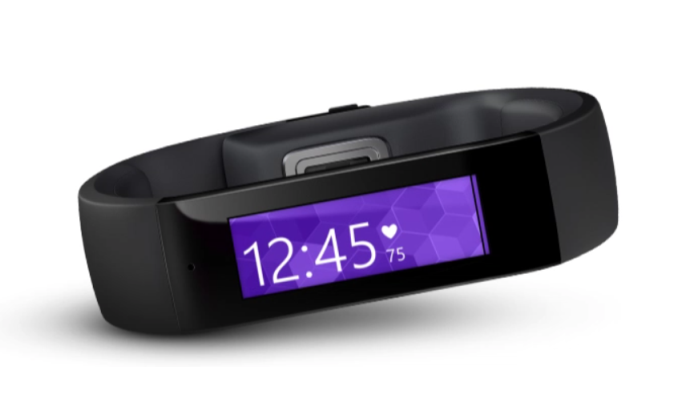Bluetooth 4.2 Core Specifications Finalized
The Bluetooth Special Interest Group (SIG) has officially adopted a new version of the Bluetooth core specifications. Version 4.2 promises greater speed, greater privacy, and a soon to be ratified Bluetooth profile for IP connectivity. With the Internet of Things (IoT) revolution underway, the Bluetooth SIG hopes that these new capabilities for the wireless standard will help Bluetooth’s personal area networks be an enabler for IoT going forward.
Bluetooth is already in many devices and is favored in mobile and wearables due to its low power profile. Battery life in wearables is critical for user experience, and as we have seen the technology for wearables is in its infancy right now. Power use will be critical, due to the limited amount of space available, so Bluetooth 4.2 will extend the features of Bluetooth Low Energy to allow low-power IP connectivity over Bluetooth with a new profile which supports IPv6 and 6LoWPAN, which is low power wireless personal area network over IPv6. Bluetooth devices will then be able to directly access the internet through an edge device, rather than have to be tethered to a smartphone or other device with IP connectivity first.
The group is also adding some privacy features to the new spec. Currently, Bluetooth Beacons can be utilized as a way to track people. For example, a department store may implement beacons to track customer movements throughout the store. While it may be well meaning, these sorts of technologies may give the feeling of an invasion of privacy, so the new 4.2 spec will allow the MAC address of Bluetooth devices to be masked unless connecting to a trusted device. At the same time, the new devices will have additional refinements to reduce power consumption as part of the Low Energy Privacy 1.2 specifications.
Microsoft Band – a Bluetooth tethered wearable
Finally, Bluetooth LE will see a speed increase, with packet capacity increasing by 10 times, and overall speed increasing by 2.5 times over previous implementations. Standard Bluetooth packets offer a payload maximum of 1021 bytes. With the new specification, there are some additional header fields and a trailer added to the packet to allow for additional payload per packet. The maximum data transfer of Bluetooth Basic Rate (the original 4.0 spec) is about 2.1 Mpbs, and Bluetooth LE can only achieve 260 kbps. The increase is targetted towards the LE spec only, which should increase the maximum theoretical speed to 650 kbps. Real world use will not achieve the full speed increase, but the Low Energy Data Length Extension will be a welcome addition to the specification as more and more devices gain connectivity. Astute readers who follow Bluetooth may realize that Bluetooth 3.0 added capability for up to 24 Mbps, but that involves using Bluetooth to negotiate a connection over Wi-Fi. For devices with a Wi-Fi radio and the power capacity, this may be a better method if high speed data is required, but if the transfer is done over Bluetooth exclusively then it should use less power.
| Bluetooth Maximum Transfer Rates (kbps) | ||||||
| Type | Symmetric Transfer | Asymmetric Forward Transfer | Asymmetric Reverse Transfer | |||
| DM1 | 108.8 | 108.8 | 108.8 | |||
| DH1 | 172.8 | 172.8 | 172.8 | |||
| DM3 | 258.1 | 387.2 | 54.4 | |||
| DH3 | 390.4 | 585.6 | 86.4 | |||
| DM5 | 286.7 | 477.8 | 36.3 | |||
| DH5 | 433.9 | 723.2 | 57.6 | |||
| AUX1 | 185.6 | 185.6 | 185.6 | |||
| 2-DH1 | 345.6 | 345.6 | 345.6 | |||
| 2-DH3 | 782.9 | 1174.4 | 172.8 | |||
| 2-DH5 | 869.1 | 1448.5 | 115.2 | |||
| 3-DH1 | 531.2 | 531.2 | 531.2 | |||
| 3-DH3 | 1177.6 | 1766.4 | 235.6 | |||
| 3-DH5 | 1306.9 | 2178.1 | 177.1 | |||
| Bluetooth LE | 260 | |||||
| Data Packet Length Extension(4.2 spec) | 650 | |||||
The Bluetooth SIG has a good reason to want to get in on the IoT movement. An estimate by the Harvard Business Review, which draws on Goldman Sachs research, estimates that by 2020 there will be 28 billion connected devices on the internet. That is a big pie, and with the existing number of devices with Bluetooth already, as well as the robust encryption Bluetooth uses, the new specifications should help drive devices to using Bluetooth as their connectivity of choice.
There are of course other competing technologies for connecting IoT devices, with the obvious one being Wi-Fi with backers such as the Thread Group. There are advantages to some of these competing technologies as well such as Mesh networking, which is not part of the new Bluetooth spec. CSR has added their own extensions to Bluetooth which do allow mesh networking, but as it is not part of the official spec it will make it harder to be relied upon.
The Bluetooth specifications have an advantage though in that they will not necessarily require new hardware. Many of these features can be added via software updates because the existing radio technology is not changing. The group has a list of “Bluetooth Smart” devices that it keeps on its website.
Source: Bluetooth SIG




